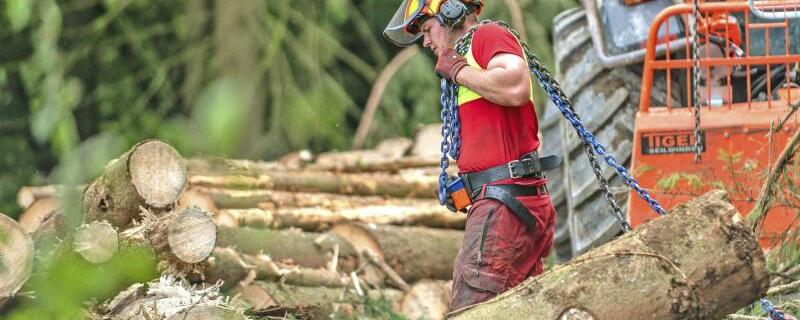
While we've long been familiar with climate and bark beetles affecting the timber industry, in the previous year, global politics also entered the scene. In 2022, the price of firewood soared, yet it continued to vanish from the market at a rapid pace. By year's end, it had become a scarce commodity. The catalyst for this change was the Ukraine conflict and the ensuing energy sanctions. Those with wood-burning stoves rushed to stockpile fuel, leading to a 15% increase in the consumption of energy wood compared to the previous year. The annual timber harvesting report from the Bavarian State Institute for Forestry and Forestry (LWF) painted an interesting picture: private forests yielded 13.76 million cubic meters of wood, while corporate forests produced 1.65 million cubic meters in 2022. This represented a 4% increase in private forests and a significant 20% boost in corporate forests compared to the prior year. The state forests, including national parks, reported a felling volume of 5.4 million cubic meters, marking a 25% increase over 2021. In contrast, the federal forest saw a slight decrease of 8%, using around 90,000 cubic meters. Altogether, the total timber harvested in 2022 reached 20.89 million cubic meters, marking a 10% surge compared to the same period in the previous year.
The logging survey involved 597 private forestry companies and 521 corporate forestry companies. The report categorized the harvested wood into four groups based on tree species: the spruce group (including spruce, fir, and Douglas fir), pine group (comprising pine and larch), oak group (encompassing pedunculate, sessile, and red oak), and the beech group (including beech and other hardwood species). These categories broke down the wood into harvest solid meters without bark (Efm or R.), separating it into trunk, industrial, and energy wood (logs and wood chips). The Russian invasion of Ukraine cast a long shadow over the entire energy market, resulting in a notable increase in the prices of all energy sources throughout the year, some more significantly than others. It remained uncertain for a considerable period whether the nation could secure its energy supply for the entirety of the winter season of 2022/2023. Those with the means to burn wood wasted no time in replenishing their fuel reserves.
An unprecedented surge in demand coupled with a limited supply has led to a substantial uptick in the cost of firewood nationwide. At its zenith, firewood, specifically hardwood, was being sold at prices exceeding €400 per stere, which is three to four times higher than historical rates. By the year's end, kiln-ready dried firewood had become a rare commodity in numerous locales, with wood chip prices experiencing a corresponding escalation. While the energy wood market enjoyed robust growth, the domestic construction sector faced looming challenges during the final quarter of the year. Increasing building loan costs and soaring building material prices resulted in a noticeable drop in construction applications. This downturn also reverberated in the lumber industry, with the Federal Statistical Office recording a 16% decrease in softwood lumber prices in December compared to the same month the previous year. The price erosion for softwood logs was similarly pronounced over the year. Conversely, hardwood logs commanded favorable prices and sustained high demand. From a conservation perspective, 2022 commenced with a series of winter storms, predominantly causing isolated and nest-related damage. Northern Bavaria was the most heavily impacted region. In early June, thunderstorms added to the wood damage in certain areas.
The threat of bark beetles was particularly pronounced in 2022, given the high initial population. The storm-damaged wood, left unprocessed or processed too late, provided an ideal breeding ground for beetles that began swarming from May onwards. This resulted in ongoing infestations in adjacent parts of the forest throughout the year. The hot and arid July further weakened the trees and shortened the beetle breeding cycle, enabling a third generation of beetles to emerge towards the end of summer. As in previous years, northern Bavaria experienced a significant bark beetle infestation, but heightened infestations were also observed in the eastern regions of the country. Unscheduled wood felling in 2022 surpassed the previous year by 13%, reaching 34% of the total felling by year-end. The LWF is conducting this survey on behalf of the State Ministry of Food, Agriculture, and Forestry. To this end, a questionnaire-based survey method was developed in collaboration with forest owners' associations and farmers' associations. Notably, participation in Bavaria is entirely voluntary, encompassing a diverse group of participants, ranging from small private forest owners to large private forest companies and municipalities. The collected data is treated confidentially, remains inaccessible to third parties, and is strictly used for its intended purpose. Ultimately, this data will be published in the federal agricultural report.